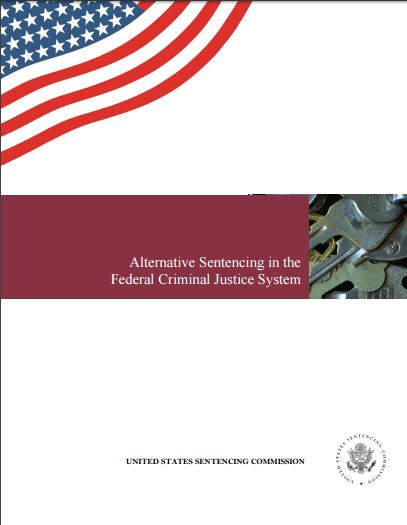Summary

This current report examines how sentencing courts use their discretion to impose alternative sentences, specifically combinations of probation and confinement options that substitute for the full prison terms permitted by law. This analysis shows a continued decreasing trend in the imposition of alternative sentences and explores factors associated with the decrease.
Key Findings
The key findings of the Commission’s study are:
- Alternative sentences were imposed for a small proportion of federal offenders, in part, as a result of the large number of federal offenders who were ineligible for such sentences due to convictions under certain statutes or their status as deportable aliens.
- During the past ten years, rates of alternative sentences declined among U.S. citizen federal offenders who were eligible for such sentences despite 1) a steady overall increase in sentences below the guideline range due to downward departures or variances and 2) overall consistency in offense severity and criminal history among those offenders.
- In recent years, the decrease in rates of alternative sentences for eligible offenders, in part, is a reflection of the Commission's 2010 amendment that expanded Zones B and C of the Sentencing Table. The amendment added to Zones B and C offenders whose sentencing ranges previously were in Zones C and D, thereby increasing the proportion of offenders eligible for alternatives. However, as to be expected, courts imposed alternatives for these more serious offenders less frequently than for offenders whose sentencing ranges otherwise were in Zones B and C. This has contributed to the decrease in the rate of alternative sentences for eligible offenders.
- Alternative sentences were imposed at notably different rates for offenders in different race categories with White offenders receiving such sentences at higher rates than Black and Hispanic offenders.
- During the past ten years, alternative sentences have been imposed at a consistently low rate among U.S. citizen offenders whose sentencing ranges were in Zone D of the Sentencing Table.
